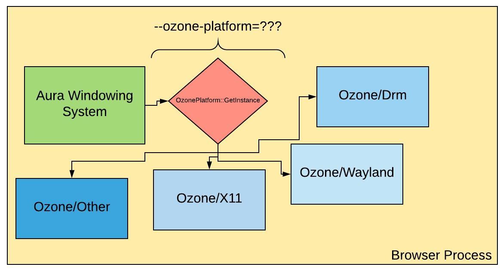Before all users of the stable browser branch of Chrome brought change, by default, activating a new code for organizing output on systems with X- The server based on the use of a layer ozone , abstracting interaction with graphic subsystem. Using Ozone allows you to provide support for X11 and Wayland in one Chrome assembly, without tosing to a specific graphic subsystem. Old backend that only supports work through the X11, it is planned to be transferred to the discharge of outdated and over time to remove from the code base.
Independence on the features of building a graphical interface in various operating systems in Chrome is implemented using its own cross-platform graphics stack aura . Aura is performed by the window manager (Aura Shell), which runs through its own composite server and using the available GPU to accelerate graphic operations. Aura UI graphic tulk pulley is used to form an interface elements that provides its own set of widgets, dialog boxes, controls and event handlers. From the capabilities of the underlying graphics stack (X11, Wayland, Cocoa or Windows), only output over the root window.
All specific operations with a graphic stack Linux are reduced to an easily replaceable abstract layer Ozone . Until now, Ozone support was provided in the form form, and by default an old backend was used, tightly tied to x11. Work on the translation of builds for x11 to use the ozone C 2020, and for users, the gradual inclusion of the OZONE / X11 backend, the default has begun in the release of Chrome 92. A few days ago, the new backend has been activated for all Linux Chrome users. In addition to x11 and Wayland (“–ozone-platform = Wayland” and “–ozone-Platform = x11”), the platforms are also developing on top of the KMS / DRM graphics drivers, output in the form of ASCII graphics using the libcaca , drawing in PNG images (Headless) and broadcast via chromecast devices.
